How To Repair Disk Permissions Mac High Sierra
Your Mac contains files and folders where you keep personal information and documents. In order to protect your files and keep them secure from prying optics, you lot tin employ a countersign or other means of encrypting the files, just there'southward a default manner that's built into macOS for that.
Disk permissions (or directory permissions) on macOS are designed to prevent other users and certain programs from opening files on your Mac and modifying them without permission. This way, you tin can balance easy knowing your files and folders are secure.
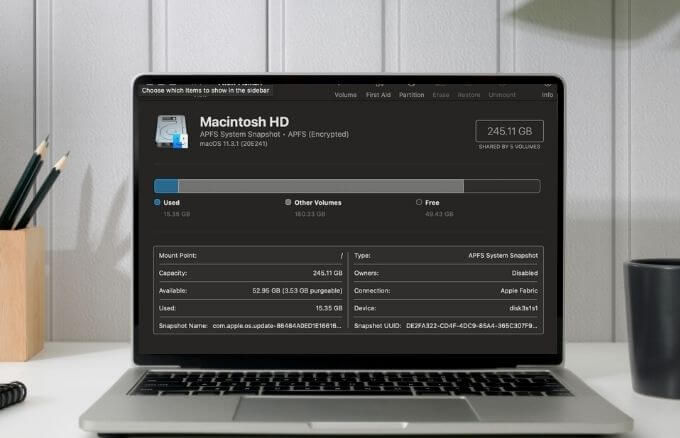
If you're having problem with deejay permissions on your Mac, this guide explains how to fix or repair disk permissions in macOS.
What Are Permissions in macOS and How Do They Work?
Permissions in macOS command the user accounts that can access the files or folders on your Mac. You can modify the permission settings in Finder at the bottom of the Info window for a file, folder or deejay.
For case, you can modify folder permission settings such that other users on your Mac who connect to information technology for file sharing can only view but not modify the files in the folders.
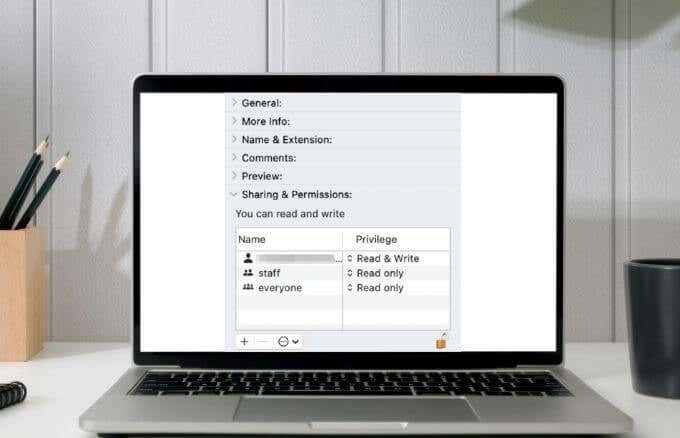
The permissions, which consist of read, write and execute activities, can be edited by iii types of users: the owner, a group, and everyone using the computer.
Every bit the owner of the computer, you lot tin utilize permissions to define separate rules for yourself, a group, or every user. These permissions include file or binder sharing, file access rights, and system integrity.
How to View File System Permissions on macOS
Viewing file arrangement permissions isn't limited to the owner of the figurer. Anyone else can view the file and folder permissions through the Finder app's Info window every bit well.
To see permissions of a file or folder:
- Correct-click the file or folder and select Become Info from the context carte du jour.
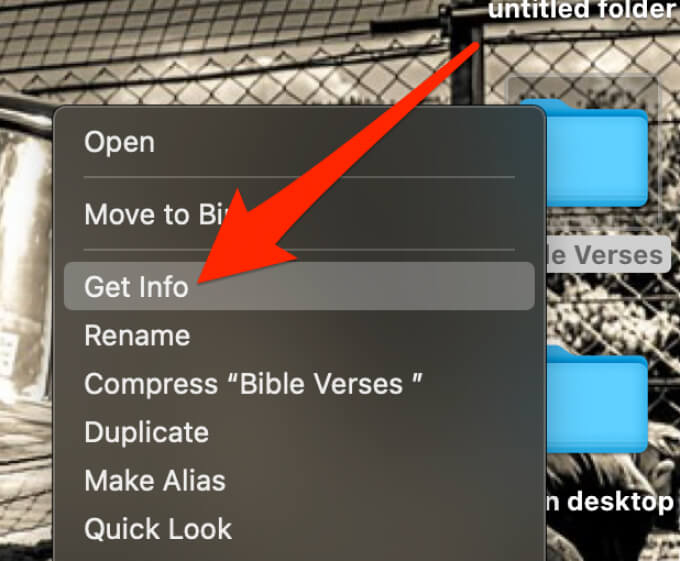
- Select Sharing & Permissions to expand the permissions.
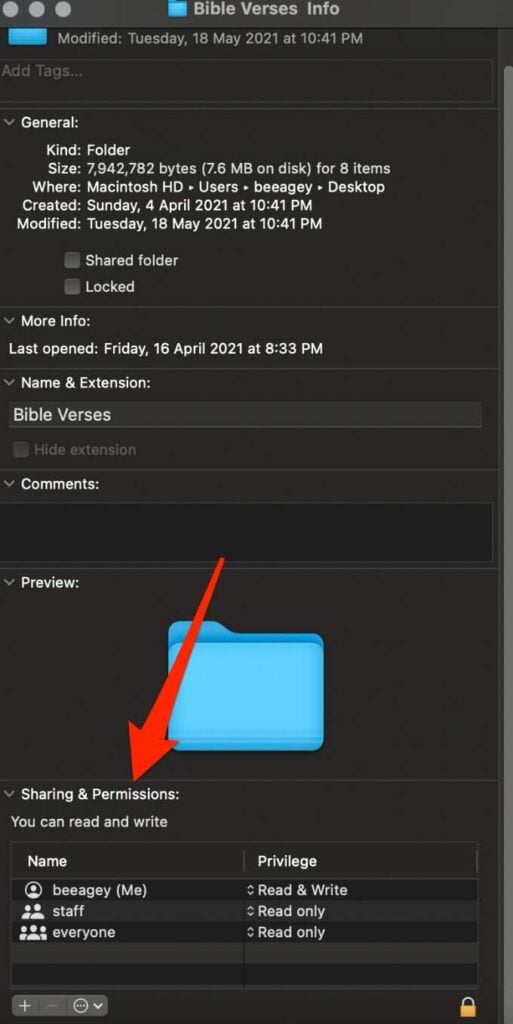
- You'll find iii different types of users in the permission fields: Possessor, group, and everyone.
- Owner: The creator of the item or the person who copied it to the computer.
- Grouping: A set of joined user accounts whose permissions apply to all members.
- Everyone: Defines access for anyone including guest, local, and sharing users.
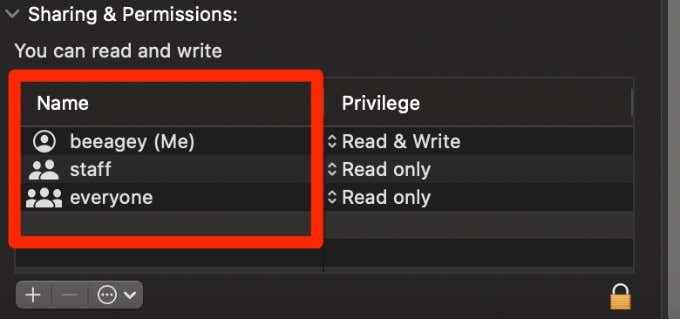
- Side by side to each user account, you'll run across permissions such every bit Read, Read and Write, Execute, or No access.
- Read permissions: Allow the user or group members only to open a file or browse a list of items in a binder. They cannot save any changes to the file or binder.
- Write permissions: Allow the user or group members to alter or delete the file or folder.
- Execute permissions: For a file this means the user can execute the file if it's a script or program. Files that aren't a script or program shouldn't accept the execute permission enabled. For a binder, it means the user tin open up the binder and see the files so long equally the read permission is enabled.
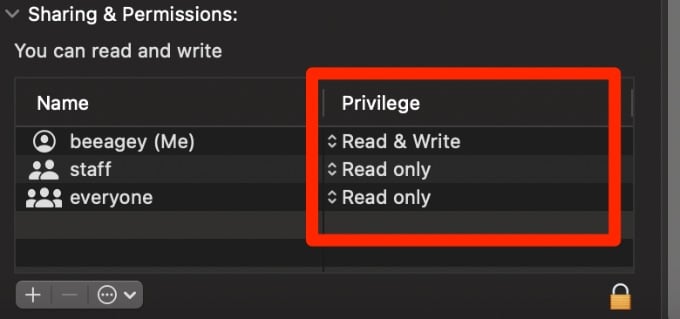
Why You Should Repair Disk Permissions in macOS
The files and folders on your Mac each take an associated set of permissions. In improver, nigh of the things y'all install in your Mac are installed from package files, which as well shop other files that don't take too much space on your difficult disk.
Within the package file are Bill of Materials files (.bom), which incorporate a list of files that the bundle has installed and the permissions for each file.
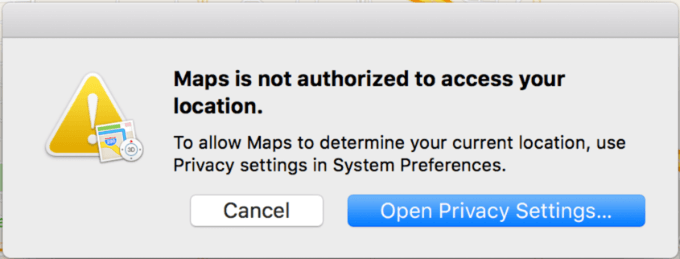
However, these file permissions can be modified, particularly when you lot're installing and uninstalling apps on your Mac. When the permissions are affected, programs on your Mac may alter and alter files, which could end up causing all sorts of organization issues like freezing, lagging or crashing, and permission errors.
If yous notice some strange changes in your Mac's performance or apps aren't working right, y'all should start by troubleshooting the deejay permissions.
Fortunately, if your Mac is running macOS Mojave 10.14 or newer versions, any new apps added to your Mac volition inquire for permission to utilise some features. If you deny these permissions, the apps may not office properly, only it increases privacy and security for your data.
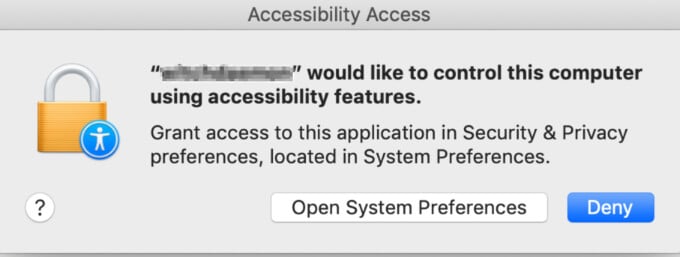
Fixing or repairing disk permissions in macOS ensures that your operating arrangement can access or change particular files. For example, disc permissions ensure that you tin can offset up your Mac, log into your business relationship, print or launch apps, and more than.
Repairing deejay permissions on macOS also ensures that detail files have the right permissions to prevent unauthorized access by apps or users that shouldn't be meddling with those files.
How to Fix or Repair Permissions in macOS
Repairing permissions is a standard Mac troubleshooting tip that appears to solve many rare types of bug on macOS. However, the option disappeared from the Disk Utility app after the release of OS 10 El Capitan ten.11.
Apple replaced the feature with Arrangement Integrity Protection (SIP), which prevents potentially malicious software from accessing of import files on your computer.
Yous tin can still repair disk permissions in macOS as the option is at present part of Offset Help, which bundles several actions together that resolve different issues related to the disk drive.
Here's how to cheque and repair the disk volume for whatever errors:
- Select Go > Utilities > Disk Utility to open Deejay Utility.
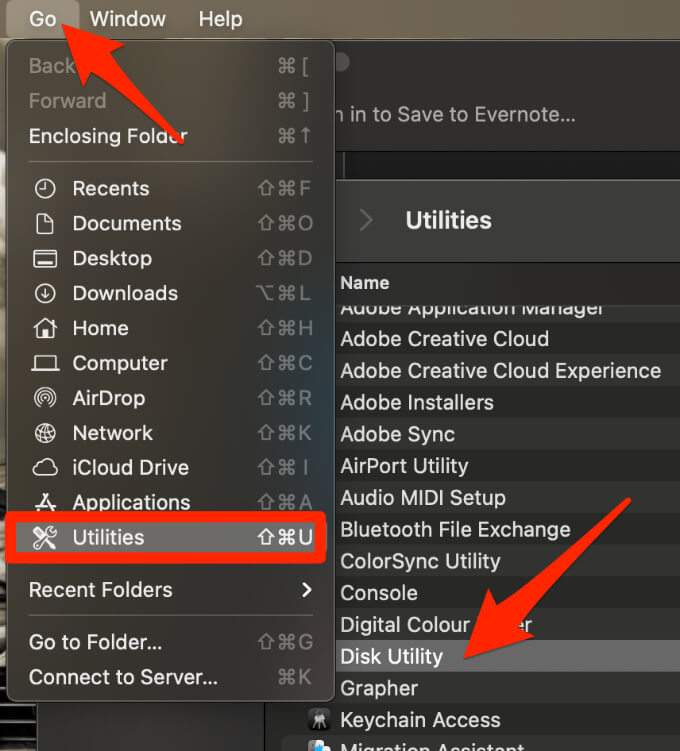
- Next, select your boot volume in the left pane.

- Select First Assist in the Disk Utility toolbar at the top right side of the window.

- Confirm that you selected the correct drive, and so select Run to starting time the disk repair process. Select Continue if yous become in the alert message popup.
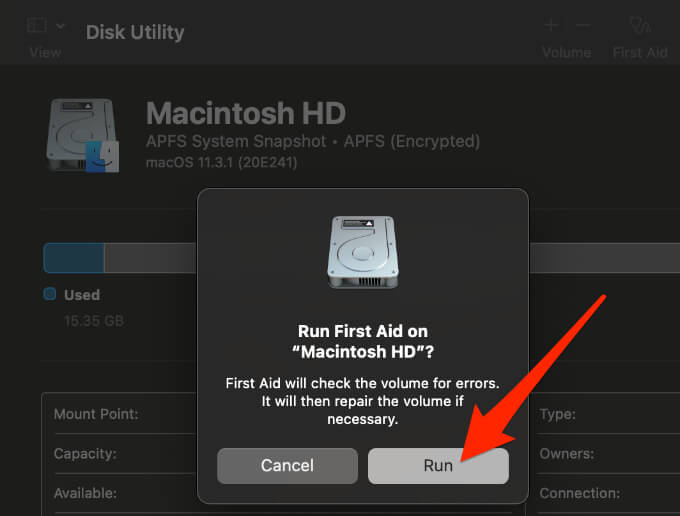
While the repair process is in progress, your Mac won't respond to whatsoever input, which is normal and expected. This happens because macOS needs to analyze the drive'due south contents correctly merely it won't have more a few minutes to complete.
One time the repair process is completed, y'all'll get a report that displays everything the process accomplished. If there are whatever serious errors, y'all'll exist notified of the issues it finds.
Reset Permissions for the Domicile Binder
The Home folder on your Mac is your user binder, which contains several other folders you access ofttimes similar Desktop, Applications, Documents, Downloads and more.
Here'south how to reset permissions for the Dwelling house folder to repair disk permissions.
- Select Go > Abode.
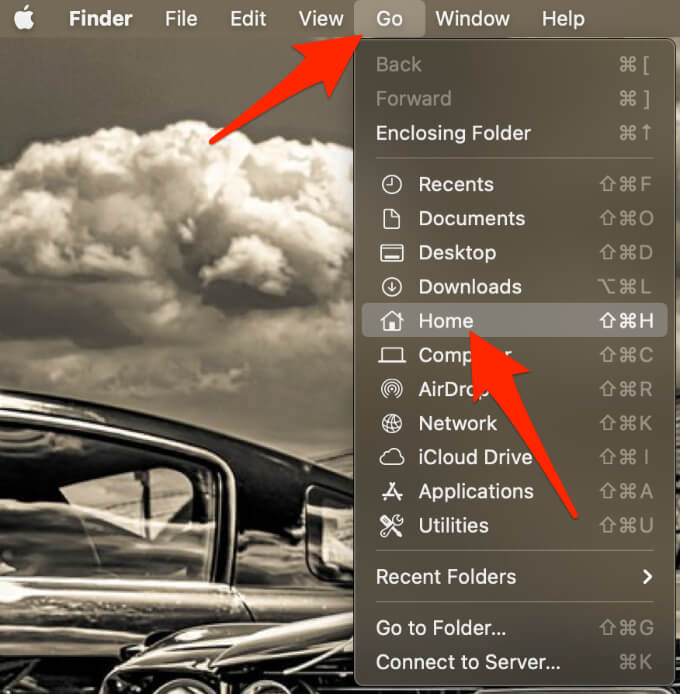
- Side by side, select File > Go Info.
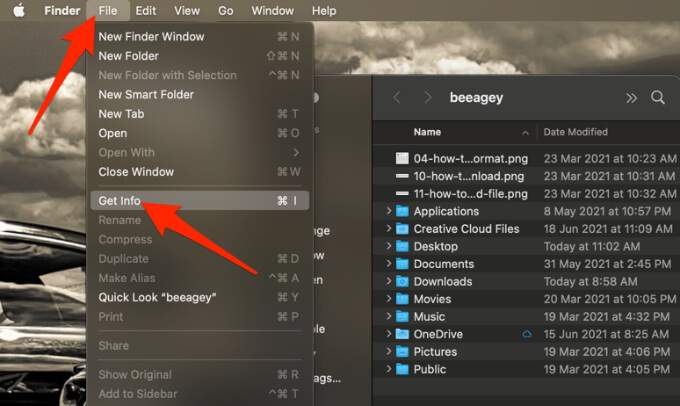
- Select Sharing & Permissions to view the binder's permissions. If the Sharing & Permissions section isn't open, select the arrow to expand it.
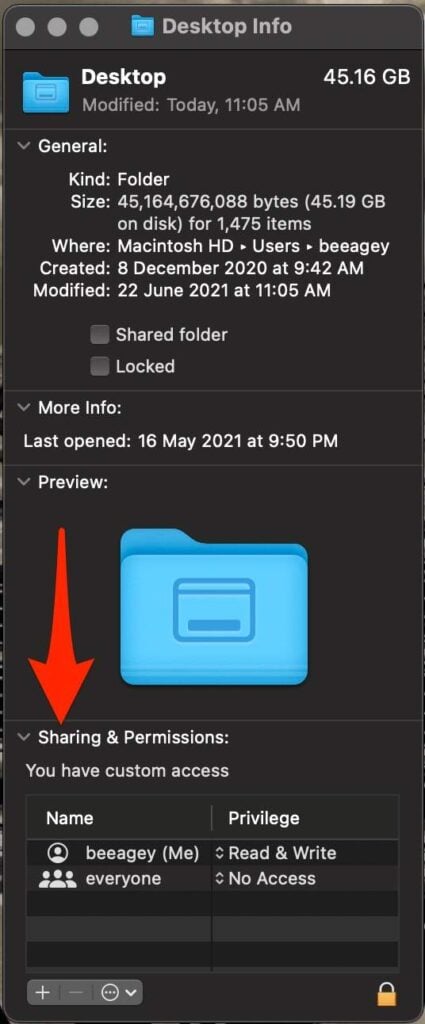
- Next, select the Lock button.
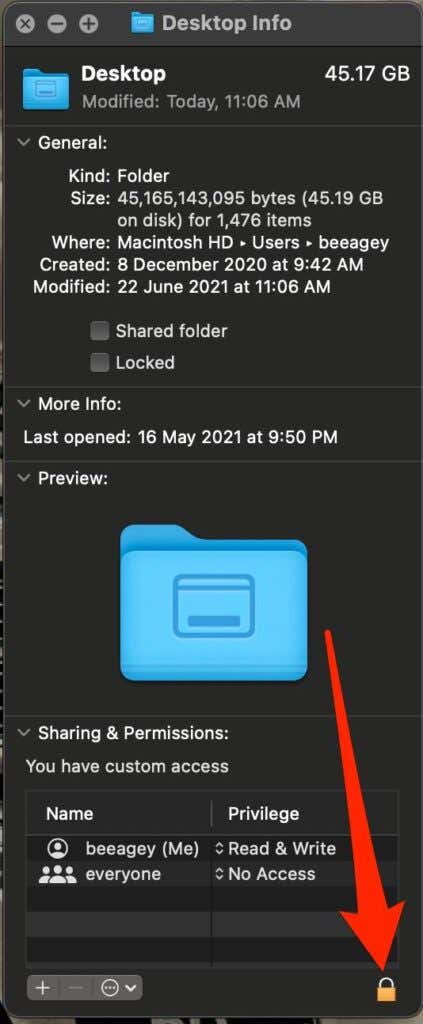
- Enter your admin name and password.
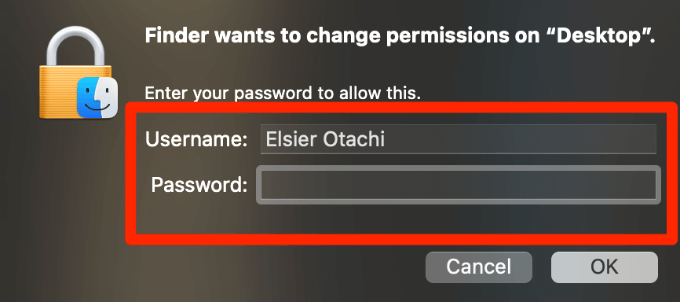
- Select the Action menu > Utilize to enclosed items.
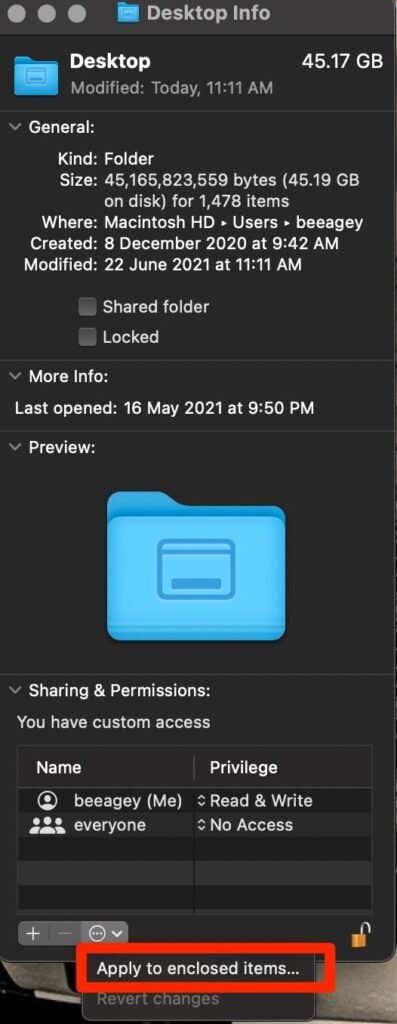
- Next, select OK to complete the permissions reset process. A progress bar will appear at the top of the window and the changes will exist reflected throughout the Habitation folder.
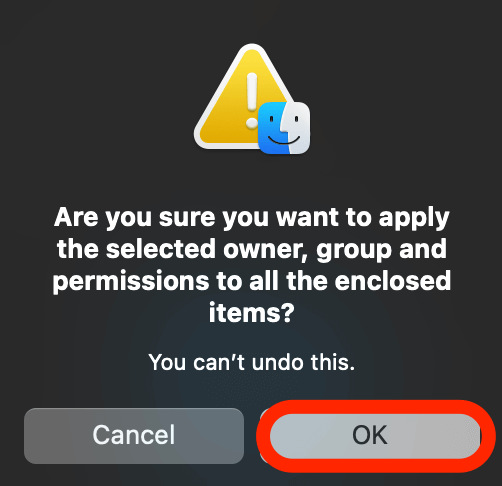
- In one case the progress bar completes, select Go > Utilities > Concluding to open Terminal.
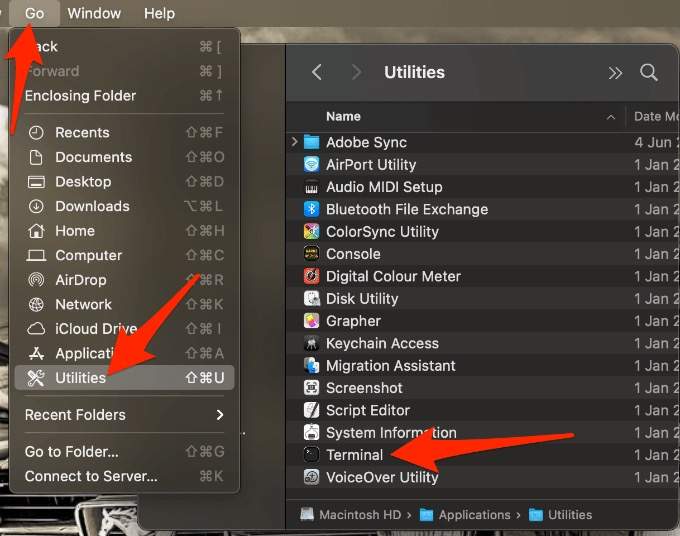
- Blazon or paste this command: diskutil resetUserPermissions / ` id -u` to reset permissions on the root volume (/) to the electric current user ID.

- When the process completes, quit Terminal, and restart your Mac to effect the changes.
What to Do If You Get the Error 69841 While Resetting Permissions on a Mac
Sometimes resetting the user permission on the root volume may not get equally planned. Yous may get the "error 69841 permissions reset on user habitation directory failed" message. If you get this fault, here'south what to do depending on your macOS version.
On macOS Mojave or newer versions
- Select Apple menu > System Preferences > Security & Privacy.
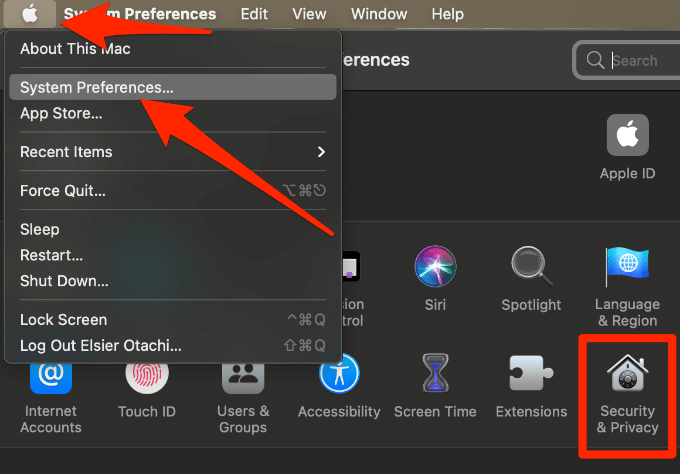
- Next, select the Privacy tab, select the Lock icon and enter your admin proper name and password.
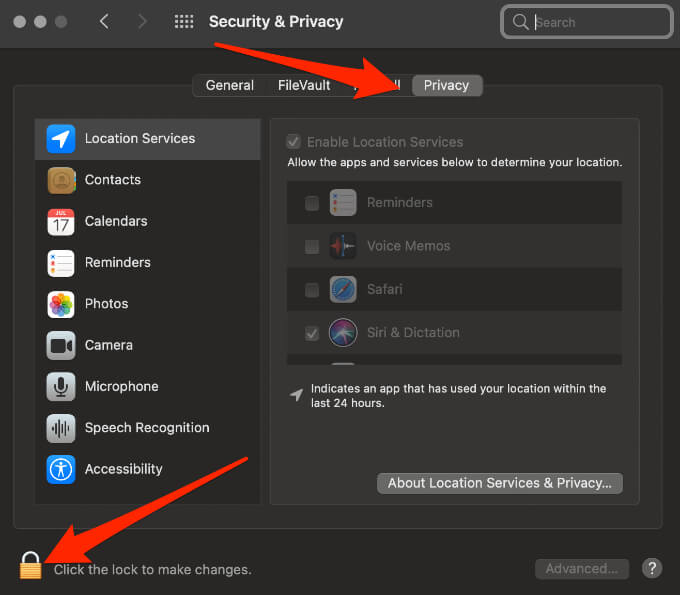
- Select the Full Disk Access tab and and so select the Add (+) button.
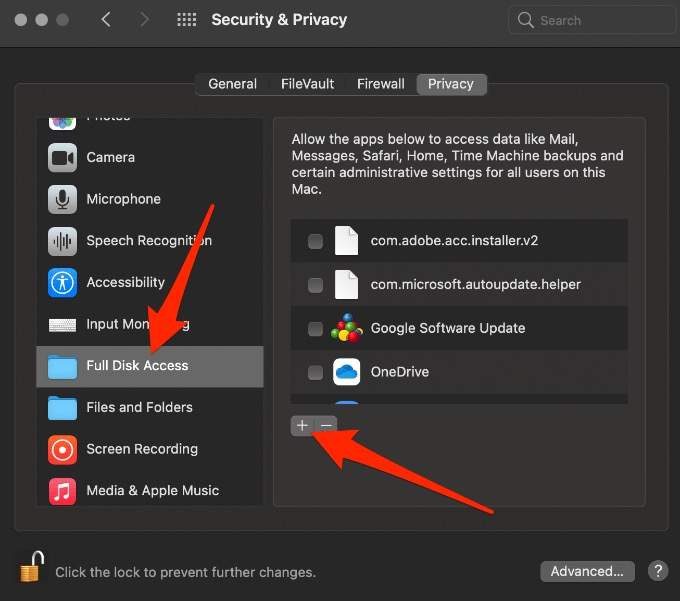
- Search for Terminal and add it to Full Disk Access.
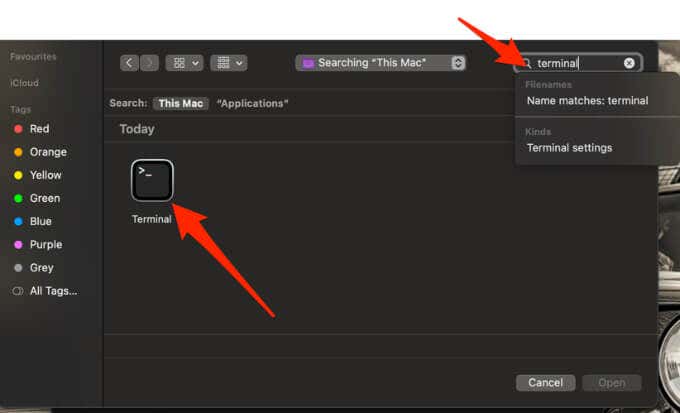
- Open Concluding and paste or blazon this command: chflags -R nouchg ~. Press Return.

- Next, type diskutil resetUserPermissions / `id -u\` and press the Render key.

- Restart your Mac to effect the changes.
On macOS High Sierra or Earlier Versions
Unlike macOS Mojave or later versions, you don't need to add together Terminal to Full Deejay Access in macOS Loftier Sierra or before versions before resolving the error 69841 on your Mac.
- Open Final and enter chflags -R nouchg ~.

- Next, type diskutil resetUserPermissions / ìd -u` and press Return.

- Restart your Mac to effect the changes.
Proceed Your Mac in Adept Shape
Fixing or repairing disk permissions in macOS should be done merely if you suspect that you accept file or binder permission bug, especially if you lot install and delete software oftentimes. That said, you need to be careful virtually the software yous download to your reckoner.
We have other guides that can help you lot prepare bug with your Mac such as when Bluetooth isn't working on your reckoner, Mac photographic camera isn't working or your Mac won't become to sleep.
Were you able to fix or repair disk permissions using the steps in this guide? Tell us about it in a comment below.
Practise not share my Personal Information.
Source: https://www.switchingtomac.com/macos/how-to-fix-or-repair-disk-permissions-in-macos/
Posted by: carterpiceaction.blogspot.com


0 Response to "How To Repair Disk Permissions Mac High Sierra"
Post a Comment